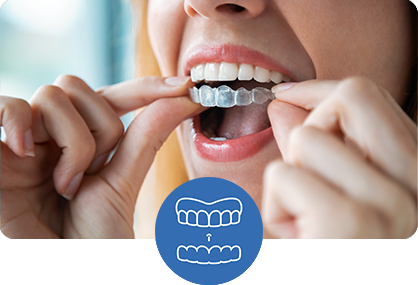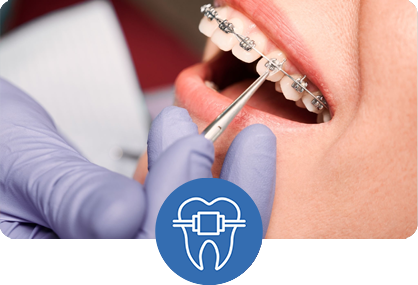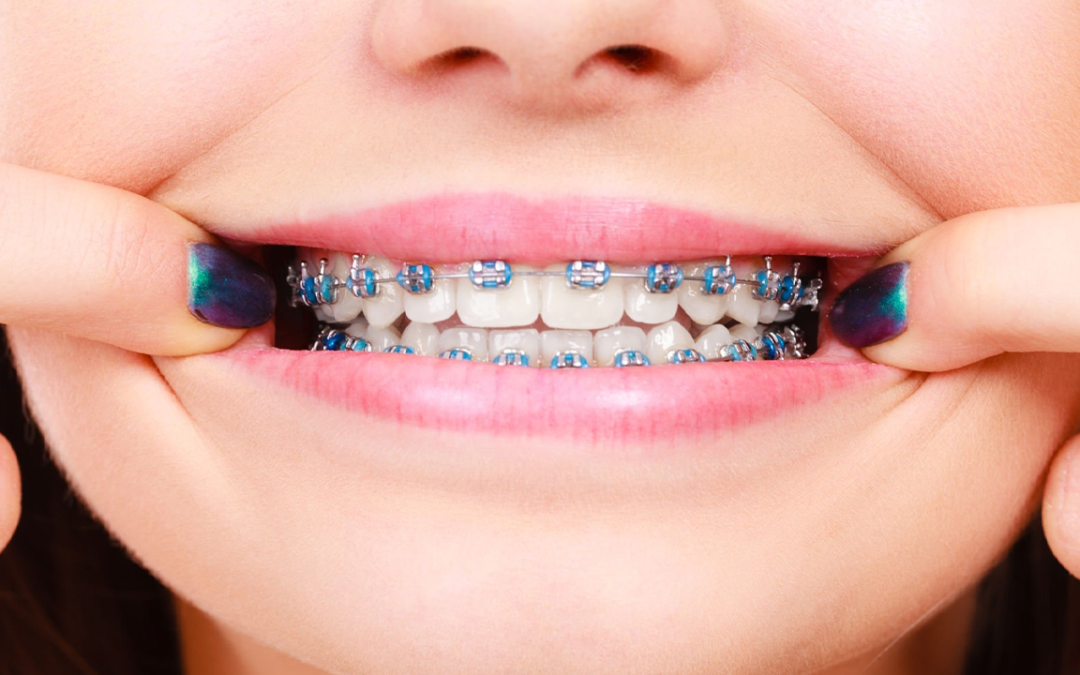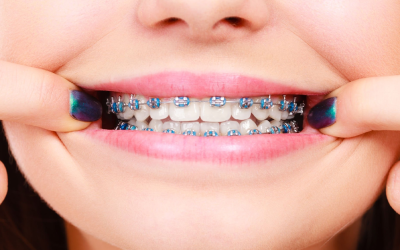Orthodontic treatment is a common milestone in adolescent development.Many teenagers require orthodontic intervention to address dental misalignments and occlusal issues. At Oakwood Dental, our mission is to provide adolescents with appropriate orthodontic solutions. This article explores orthodontic options for teenagers and our comprehensive approach to establishing long-term dental health. Our clinical team delivers personalized care utilizing advanced orthodontic techniques to optimize outcomes for your teenager’s dentition.
Teen Braces Solutions: Key Points
- Optimal age for orthodontic intervention: 10-14 years
- Individualized treatment protocols available
- Consistent dental monitoring essential
- Diverse orthodontic options for specific clinical presentations
- Meticulous oral hygiene protocols required
The Importance of Orthodontic Treatment in Adolescence
Adolescence presents an ideal window for orthodontic intervention. Between ages 11 and 15, permanent dentition is typically established while maxillofacial development remains active. This combination creates optimal conditions for dental realignment and establishing proper occlusion for lifelong oral health. Orthodontic treatment for teens provides multiple benefits:
- Enhanced dental alignment and occlusion, preventing temporomandibular joint disorders
- Improved self-esteem and aesthetic outcomes
- Reduced risk of future dental complications
- Enhanced efficacy of oral hygiene practices
- Potential correction of speech impediments associated with malocclusion
- Decreased vulnerability of protruding anterior teeth
Types of Braces for Teens
At Oakwood Dental, we offer multiple orthodontic solutions tailored to each adolescent’s specific requirements. Our dental professionals will collaborate with you to develop an optimal treatment protocol:
1. Traditional Metal Braces
This conventional approach remains the most prevalent and cost-effective option. Metal braces provide excellent clinical outcomes for complex malocclusions. Contemporary metal brackets are significantly reduced in size and improved in comfort compared to previous generations. Advanced archwire technology facilitates more efficient tooth movement with reduced discomfort.
2. Ceramic Braces
These appliances feature translucent or tooth-colored brackets for enhanced aesthetics. While moderately higher in cost, they provide improved cosmetic appeal. The mechanical function mirrors that of metal appliances while offering superior integration with natural dentition.
3. Clear Aligners
Clear aligner systems such as Invisalign offer a virtually imperceptible and removable orthodontic solution. These are particularly appropriate for mild to moderate malocclusions. Adolescents with aesthetic concerns often prefer this option. The treatment utilizes custom-fabricated thermoplastic trays that progressively reposition dentition to the desired alignment.
The Orthodontic Treatment Process
Orthodontic intervention involves a systematic clinical approach. The following outlines what patients and parents should anticipate:
- Initial consultation and comprehensive examination: Our clinician will conduct a thorough assessment of dentition, skeletal relationships, and facial aesthetics. Diagnostic imaging and impressions may be obtained.
- Treatment planning: A customized intervention protocol will be developed based on individual diagnostic findings.
- Appliance placement: This procedure typically requires a short duration to complete.
- Periodic assessment (every 4-8 weeks): Progress evaluation and necessary adjustments will be performed.
- Appliance removal and retention phase: Upon completion of active treatment, appliances are removed and appropriate retention mechanisms implemented to maintain results.
Treatment duration typically ranges from 18 months to 3 years, contingent upon case complexity and patient compliance.
Preparing Your Teen for Braces
Prior to orthodontic appliance placement, appropriate preparation is essential. Consider these recommendations:
- Discuss therapeutic benefits and establish realistic expectations
- Address concerns and provide emotional support
- Encourage direct communication with dental professionals
- Obtain appropriate dietary options and oral hygiene instruments
- Assemble a portable oral hygiene kit for school use
- Establish effective oral hygiene protocols
- Consider academic scheduling when planning treatment initiation
Essential Care and Maintenance
Meticulous maintenance of orthodontic appliances is critical to successful outcomes. Encourage these practices:
- Thorough brushing after each meal utilizing a soft-bristled toothbrush
- Daily interdental cleaning with appliance-specific flossing devices
- Avoidance of hard, adhesive, and cariogenic food items
- Utilization of protective oral appliances during athletic activities
- Adherence to scheduled clinical appointments
- Application of orthodontic wax on potential irritants
- Knowledge of appropriate protocols for appliance complications
Addressing Common Concerns
Adolescents frequently express apprehension regarding orthodontic therapy. Below are prevalent issues and management strategies:
Discomfort and Pain
Transient discomfort is common, particularly after adjustment appointments. Using appropriate analgesics and opting for softer foods can help provide relief. This sensation is a sign of active tooth movement and is temporary.
Speech Adjustments
Initial phonetic adaptation is common but typically resolves promptly. Encourage verbal practice through reading aloud or similar exercises.
Self-Esteem Considerations
Emphasize the transient nature of treatment and the long-term aesthetic benefits. Explore personalization options such as colored elastomerics to enhance acceptance.
Dietary Restrictions
Emphasize the extensive range of permissible foods. Explore alternative snack and meal options compatible with orthodontic appliances.
Oral Hygiene Challenges
Implement engaging approaches to oral care through specialized instruments or positive reinforcement systems. Your dentist may also use disclosing agents to help identify areas that require extra attention.
The Benefits of Braces for Teens
Understanding the comprehensive benefits of orthodontic therapy can enhance patient motivation. These include:
- Optimized dental alignment and occlusal function
- Enhanced self-confidence and aesthetic outcomes
- Decreased incidence of future dental pathologies
- Improved overall oral health status
- Enhanced phonetic function
- Reduced susceptibility to dental trauma
- Potential enhancement of respiratory function and sleep quality
- Long-term reduction in restorative dental expenditures
Back-to-School with Braces: Tips for Success
Academic reintegration with orthodontic appliances presents unique challenges. Consider these recommendations:
- Maintain portable oral hygiene supplies at school
- Select appropriate dietary options for school meals
- Ensure adequate hydration
- Avoid habitual chewing of non-food items
- Develop appropriate responses to potential peer comments
- Communicate with educational staff regarding specific requirements
- Maintain full participation in academic and extracurricular activities
- Establish protocols for managing orthodontic emergencies
Conclusion: Fostering Optimal Dental Health in Adolescents
Selecting appropriate orthodontic intervention for your adolescent represents a significant investment in their future oral health and psychological well-being. At Oakwood Dental, we provide individualized care tailored to each patient’s unique clinical presentation. Through comprehensive understanding of the therapeutic process, addressing potential concerns, and maintaining meticulous oral hygiene protocols, your adolescent can achieve optimal dental alignment and function. Our clinical team is committed to supporting both patients and parents throughout the treatment process.
Implementing protective measures for dentition during academic periods and throughout orthodontic therapy is essential. With appropriate clinical management and support systems, orthodontic treatment can represent a positive developmental milestone. The temporary adaptations required during treatment yield substantial long-term benefits in dental health and self-confidence. We encourage viewing orthodontic intervention as an investment in both physiological health and psychological well-being.
For a comprehensive exploration of adolescent orthodontic options, contact Oakwood Dental to schedule a consultation and initiate the process toward optimal dental alignment. Our professional team stands ready to address your inquiries and develop a treatment protocol tailored to your adolescent’s specific requirements. Through collaborative effort, we can ensure successful orthodontic outcomes, establishing the foundation for lifelong dental health.

 718-979-2121
718-979-2121




